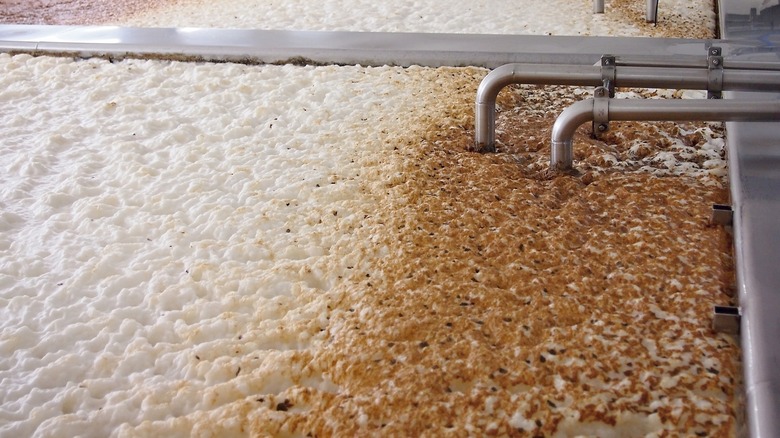Irish Researchers Made A Big Discovery About The Origins Of Lager
It seems only fitting that the Irish would make significant headway in the ongoing history and mystery of beer in Europe. According to The New York Times, a paper published on December 7 in the scientific journal FEMS Yeast details the discovery of a particular yeast that was previously thought not to exist in Europe made by students of the University College Dublin. The yeast in question is one of a parental pair that, when combined, create Saccharomyces pastorianus, the yeast essential for making lager (via Independent.ie).
According to The University of Toronto, lager's roots lie in 15th-century Bavaria, a large area in Germany that surrounds Munich. Lager, which means "storage" in German, was kept in cold caves as it fermented, so the yeast used needed to be cold-hardy for the process to occur. Lager is unusual in this way, as most ales are fermented in warmer temperatures and use top-fermenting yeast; S.pastorianus is known as bottom-fermenting yeast. The parents of the hardy yeast are S. cerevisiae, which was known to be native to Europe and S. eubayanus, which, until recently, wasn't (via Independent.ie).
S. eubayanus and what the Irish found
According to The Daily Mail, the elusive yeast S. eubayanus was first discovered in 2011 in the wilds of Patagonia, Argentina. Like its child S. pastorianus, S. eubayanus is cold resistant. This trait was undoubtedly passed along to its offspring, as the two are 99% identical. S. eubayanus has since been discovered in numerous countries across South and North America, as well as Tibet and New Zealand. In Europe, however, the strain remained undiscovered, begging the question of how exactly S. eubayanus made its way from Patagonia to Bavaria to join up with S. cerevisiae, per The Economist.
So, what did the researchers at University College Dublin find? They found evidence of S. eubayanus in Irish soil, of all places. According to Indpendent.ie, undergraduate researchers doing a project on wild yeasts found were able to isolate two strands of S. eubayanus from soil samples they took from wood on the Belfield campus of University College. The researchers were able to prove that S. eubayanus is native to Europe, and they are hoping to find a commercial partner that will help them brew with the yeast. We'll be looking forward to that brew sometime shortly, no doubt.

